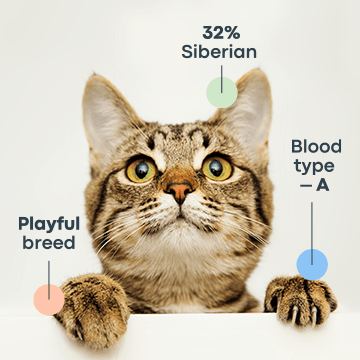The British shorthair is one of the most popular breeds around the world. This stunning breed comes in various colors and patterns. British blues make wonderful pets and are ideal for a family with kids and other animals.
The tranquil and affectionate breed, the beautiful British shorthairs are among the top cats in the feline community. Let's go deeper and get to know the British shorthair breed, their history, appearance, temperament, essentials for their care, and common health problems.
History
The British shorthair is one of the oldest cats in Great Britain. Originally, invading Romans brought British shorthairs to England to control vermin. They dispersed throughout as farm and street cats. People in England began to like and welcome them onto their laps because of their calm and easy-going personalities. Over time, they evolved into round-faced cats with short, thick coats of various colors.
British shorthairs came into being in the 1800s when a relentless breeder, Harrison Weir, conventionally started breeding them with varied cats. A blue tabby British shorthair owned by Harrison Weir won best at the first organized cat show held at London’s Crystal Palace in 1871.
The British shorthair cat we appreciate now was refined by crossing with Russian blue, Persian, French Chartreux, and domestic shorthairs after World War I as they kept disappearing. Finally, the British shorthair got their formal recognition in the 1970s.
Appearance
The British shorthair are medium-sized cats with thick, dense single coats in various colors or patterns. Females are a little smaller than males. The adorable British shorthair cats have rounded heads, chubby cheeks, medium-sized ears, and a firm chin.
Generally, British shorthair orange-amber-eyed cats have blue-colored coats, whereas cats with different coat colors can have copper, green, blue, or amber eyes.
Temperament
British shorthairs are easy-going felines and usually get along with everyone in the family, which includes children and other animals. They are active, affectionate, and intelligent. British shorthair cats are ambiverts, which means they like attention but also need personal space and do not appreciate you hugging or carrying them too much.
Care
British Shorthairs are generally healthy and low-maintenance cats. However, like any other cat breed, they also need some care to stay healthy and lively.
Nutrition and Feeding
British shorthair cats are firmly built but try to maintain their healthy weight to avoid health problems like diabetes or heart disease. You must feed your adult cat carefully proportioned meals twice a day and feed your British shorthair kitten three times a day.
Also, try to keep the food somewhere your cat cannot access to prevent overeating because it can lead to an unhealthy weight. It is best to consult your veterinarian about adequate foods for your cat.
Grooming
Unlike longhair cats, British shorthair kittens do not need grooming every other day due to their shorthair and only require weekly brushing to remove skin cells and dead hair. You can use a soft, slicker brush to groom your cat.
However, your British shorthair needs proper dental care and regular nail trims like any other breed. Trim their nails every two to three weeks. Also, check your cat’s ears weekly for wax accumulation or likely ear mites. If there is any debris, clean it with a cotton ball, and if their ears are grimy or red, get it examined by a veterinarian.
Exercise
British shorthairs are lively cats but not excessively active. You need to provide ways for them to exercise. Play with your British shorthair cat a few times a day. You can use feather wands, toy mice, cat laser pointers, and other toys.
You can also get them cat trees, cat-friendly bookshelves, and kitty condos to climb, which are excellent for physical and mental stimulation. Another great way to get some exercise is through scratching. Build several proper vertical and horizontal scratching places.
Common Health Problems
The British shorthair lifespan is around 12-20 years, and they are typically healthy cats. However, like any other breed, they can have health issues. The British blue cat can be prone to a genetic condition called hypertrophic cardiomyopathy, the thickening of the heart's muscular walls. The symptoms include lethargy, difficulty breathing, and loss of appetite in older cats.
Other conditions that can affect your British shorthair cat’s health are kidney and urinary tract issues. And so you must visit your veterinarian for a physical examination at least once a year. It will help ensure your cat is healthy and you can stay alert for any developing health issue.
Conclusion
British shorthairs mature slowly, both mentally and physically. They reach their final weight and size when they are about 5 years or older. These cats may display playfulness until they are matured, but then they are a well-behaved breed. British shorthairs are brilliant companions for people who are gentle and adore cats and get along well with other pets.
If you are considering getting one of these beautiful gray cat breeds, here are some pros and cons of British shorthair cats to help you decide.
Pros of British Shorthair
British shorthairs have calm and easy-going personalities
They are short-coated and do not shed a lot of fur
These cats are friendly with children and other pets around the house
Often happy to be the only cat
British blues are adoring but not needy
Cons of British Shorthair
Don’t appreciate being carried or hugged
British shorthairs are not very active
They should not be left alone for many hours
Frequently Asked Questions
What are British cat breeds?
The top 9 British cat breeds include Oriental, Devon Rex, British shorthair, British longhair, Havana Brown, Cornish Rex, Burmilla, Asian Cat, and Chinchilla.
How long is the British shorthair lifespan?
According to PetMD, the average lifespan of the British Shorthair is about 12-20 years.




